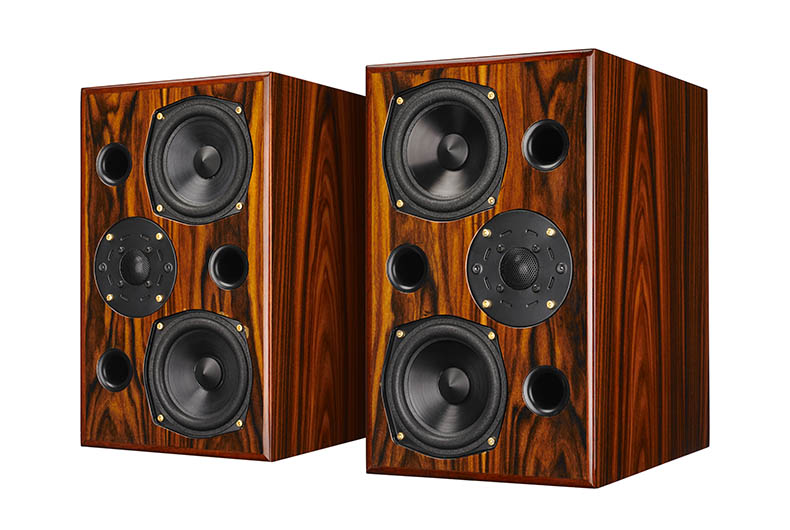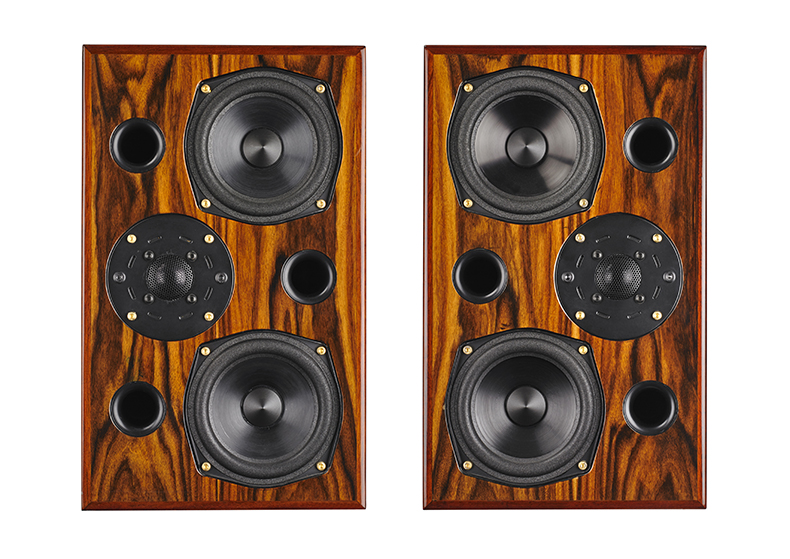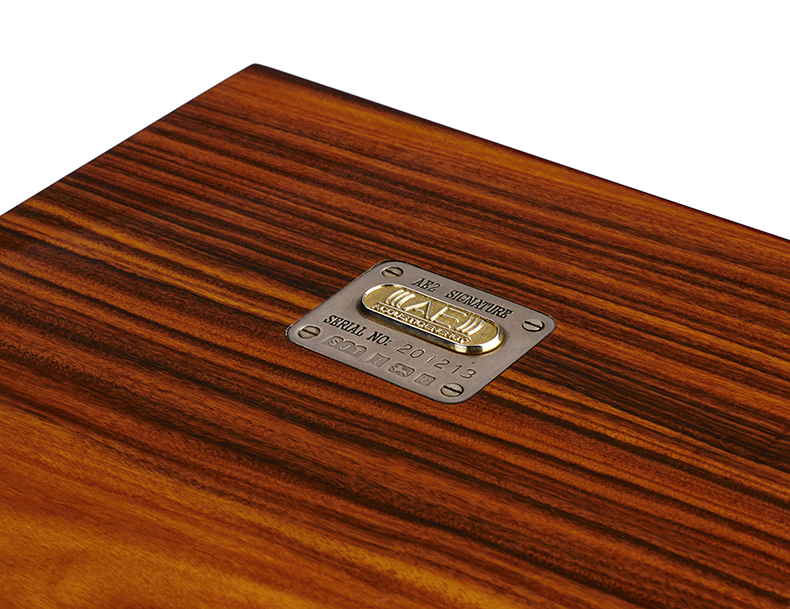That Was Then... Acoustic Energy AE2 Signature
Under-appreciated since 1994

Acoustic Energy’s first-ever speakers were the legendary AE1 mini-monitors. Launched in 1987, they cost big money (about £700, which is getting on for £2000 in today's money) but they also shattered perceptions of what small speakers could do.
The AE1s used an unusual-for-the-time all-metal drive unit line-up, twin forward-firing ports and a cabinet lined with plaster (designed to not only minimise the build-up of internal standing waves but add damping, too). The result was a sonic presentation packed with stunning dynamics, excellent detail and surprising authority - just as long as the partnering system had the required quality and muscle.

A year later, in 1988, the company released the larger AE2s. These featured pretty much the same technology, but the cabinet was about a third bigger in each direction and packed two of the 9cm alloy mid/bass units with three reflex ports. The 25mm magnesium alloy dome tweeter was carried over unchanged.
The AE2s were better than their smaller siblings in many ways, including delivering more powerful bass performance and greater authority - but they always lived in the AE1s' shadow, probably because they lacked the surprise factor of the smaller speakers.
That’s a bit of a shame. Having spent some time with the Signature versions, we still think there’s an awful lot to like here.

The standard AE2s lived on until 1996, while the Signature version launched in 1994 and soldiered on until 2002. While the basic drive units and dimensions were shared between the two variants, much else was changed.
The Signature used better-matched drivers – the tolerance being an astonishing 0.25dB across the frequency range – with a totally new, first-order crossover packed with exotic components. The standard design used a third-order network and a slightly lower crossover point of 3kHz (rather than 3.5kHz). The Signature’s simplified crossover was encased in a resin compound to minimise resonance and microphony, and was claimed to improve transparency, dynamics and detail.
The latest hi-fi, home cinema and tech news, reviews, buying advice and deals, direct to your inbox.
Inside the cabinet, the internal damping changed from the plaster compound to a combination of steel plates and bitumen. On the outside, the Signatures looked more luxurious, sporting a hand-polished deep gloss finish over a lovely wood veneer.
All these changes put the price up notably. The Signature version cost £2995 of your 1994 money, around 30 per cent more than the standard model.

Judged by today’s standards, the AE2s still look special and purposeful. There’s no denying their appearance is a little industrial, but no more so than most speakers of the time.
Acoustic Energy used to make dedicated stands for the AE2s. The supports were immensely solid, a little ornate and rather heavy. They’re rare, but well worth searching out. If you can’t find a pair, the AE2s sound perfectly happy on anything rigid and strong enough to hold their considerable 23kg per cabinet weight.

Despite their age, the AE2 Signatures remain impressively transparent performers. They thrive on the end of a powerful amplifier – our 200 watts per channel Gamut D200i works a treat – delivering a quality of sound that impresses even by current standards. The speakers’ sensitivity is high at 90dB/W/m and their nominal impedance is claimed to be a reasonable 6ohms. The power handling is impressive, rated at up to 250W.
Our first surprise is, despite being just 38.5cm tall, the AE2s sound surprisingly solid and authoritative. For such reasonably sized standmounters, they have a swagger that suggests little will trouble them. We play Bruce Springsteen’s Radio Nowhere and they’re happy to charge along full throttle. There’s plenty of attack and no shortage of punch, particularly through the midrange and treble.
Given the all-metal drive unit configuration, we’re impressed at the refinement. While these speakers won’t pull their punches, they don’t highlight flaws either. Those drive units are well behaved, delivering refinement that belies the age of the design. Harsh recordings and system flaws are readily revealed, but these standmounters don’t go out of their way to be rude.

Detail levels are good too. The best speakers at around £2000, such as designs from ATC, PMC or Spendor, will resolve more in the way of subtle detail and low-level dynamic nuances, but by general standards the AE2s can still be considered insightful and musically coherent.
The AE2s are entertaining too, though lacking a degree of rhythmic precision. They don’t quite convey the ebb and flow of the music’s momentum with the skill we’d like. That said, they’re still agile and articulate, retaining enough in the way of excitement to keep us hooked on the listening experience.
We move onto Hans Zimmer’s Inception OST and are impressed at the confidence of these speakers. They deliver the music with verve, and have the composure and organisation to keep things in place when the recording becomes dense.
Tonally, there’s a little roll-off at the very top end, but the rest of the treble has plenty of bite and attack without becoming wearing. Bass reach isn’t unusually extended for what is still a compact box, but it remains taut and precise for the most part. Low frequencies sound a little dynamically polite compared with the rest of the frequency range, the AE2s sounding more concerned with hitting the right notes rather than rendering them with a full dose of energy.
While the original AE1s thoroughly deserve their place in hi-fi’s hall of fame, we would suggest the AE2s aren’t as far away from greatness as history cares to remember. With a carefully chosen partnering system their presentation remains surprisingly confident ,while delivering enough in the way of insight and dynamic contrast to satisfy. If you manage to find a pair in good condition, dive right in.
MORE:
Welcome to What Hi-Fi?'s British Hi-Fi Week
The best hi-fi and wireless speaker deals
Best speakers 2019: standmount, floorstander, desktop, active
What Hi-Fi?, founded in 1976, is the world's leading independent guide to buying and owning hi-fi and home entertainment products. Our comprehensive tests help you buy the very best for your money, with our advice sections giving you step-by-step information on how to get even more from your music and movies. Everything is tested by our dedicated team of in-house reviewers in our custom-built test rooms in London, Reading and Bath. Our coveted five-star rating and Awards are recognised all over the world as the ultimate seal of approval, so you can buy with absolute confidence.

